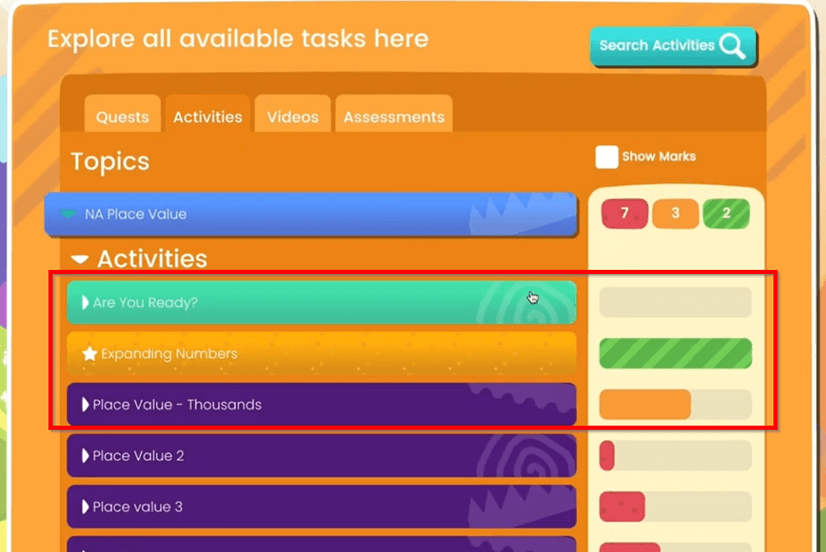You’ve taken all the necessary steps to prepare your child for learning at home.
There’s a desk set up, a carefully drawn timetable in the kitchen, and plenty of worksheets and online lessons that need to be completed.
All you need to take care of now is well… the actual teaching and learning bit.
With no teaching qualification or classroom experience, you start to panic.
First things first, take a deep breath. You’re not in this alone. There are easy guidelines to follow that will make the parent-to-teacher transition much easier for both you and your child.
Here’s what you need to do.
1. Keep your goals and expectations realistic
Don’t set completely unreal expectations for yourself. It will only add to existing stress or anxiety, and it’s not going to help your child’s learning.
You don’t need to worry about:
- Studying up on your child’s course content (remember how to multiply fractions?)
- Creating formal lessons
- Dropping everything to run a regular, six to eight-hour school day in your home
- Testing and assessing your child.
Remember that your child still has a teacher they can contact and, in most cases, work that has been assigned to them for the period.
You don’t need to become a professional classroom teacher overnight.
This is a situation that asks no more of parents than that they do their best to keep their children happy, safe and engaged with learning opportunities wherever possible.
2. Make wellbeing your first priority
Tend to your child’s social, emotional and physical health before you worry about their learning. They’ll need it when they’re forced to spend large amounts of time indoors without their friends. It’s important to:
- Promote social connectivity: During a time of relative isolation, it’s important to let your child see and chat to their friends regularly. You might consider letting them work together with the help of Skype or Zoom in order to bring back some of the collaboration of the classroom or scheduling a time to play a game via a video call.
- Encourage physical exercise: Keep your child moving with games and outdoor activity (where possible). If you don’t have access to an outdoor area, you might start each day with a video workout or yoga session.
- Limit screen time: Digital technologies will play a big part in distance education for most children, so keep plenty of books on hand to give your child a break. Exercise is also important for this reason.
3. Keep a flexible routine
Rigid daily planners designed to mimic the school day will quickly fall apart. You’ll never be able to convince your child that they’re still at school, and you’ll have commitments of your own.
While learning at home should have some structure and predictability, it’s important to keep it flexible. You now have the luxury to see what works for every member of the family.
If your teenager has always struggled to get out of bed at dawn each morning for the commute to school, a sleep in might be just what they need. If you’re the parent of a little one who just can’t sit still or focus after lunch, you might decide to confine learning time to mornings only. Your working arrangements and availability will also fluctuate. It’s something that you can work out together.
Once a natural sense of routine and rhythm has established itself, stick to it.
Try to draw clear boundaries between work and play so that your children know there are designated times for learning. Soon they’ll begin to naturally take on a classroom mindset for the ‘learning hours’ of the day.
4. Give your child some autonomy
Many of us will have grown up in classrooms where teachers used very direct, command-oriented styles of instruction, so we might think that’s the role we need to play for our children learning at home.
Most classrooms today have a higher level of autonomy. Self-directed and explorative activities with background teacher guidance have begun to take the place of the old ‘chalk and talk’. Resist the urge to micromanage! It’s a good lesson in self-discipline for them and a way to avoid stress for you.
5. Reward their effort and engagement
Instead of brainstorming ways to discipline and wrangle your child into sitting down and doing the work, think of ways that you can motivate your child to engage with learning at home.
Maybe there is a movie they’d like to see, a meal they’d like to have, or a game they’d like to play. You might even let them out of ‘class’ a little earlier if they work well.
Most importantly, praise shouldn’t be reserved for high performance alone. Congratulate them for effort, independent working and responsible use of technology as well.
It’s far more effective than any punishment for poor conduct.
6. Create some long term activities or projects
Your role might not be to teach the curriculum content itself, but that doesn’t mean you can’t set some activities of your own. After all, you know your child best and are well placed to create engaging long-term projects that cater to their specific interests. Consider tasking your child with:
- Developing an informative presentation on a research topic of their choice
- Writing a story
- Making an art or craft piece
- Building something out of household objects
- A learning goal for an EdTech program (eg a high score or personal best).
There’s more to learning than school and curriculum-based instruction, so don’t stress about creating meticulous assessment tasks aligned with a curriculum — your child’s teacher will cover those areas. Instead, keep the focus on fun and engagement. You might find that your child embraces learning in a whole new way that would never have be possible within the confines of the classroom.
7. Use home activities as a source of learning
You don’t have to look far for learning opportunities at home. Cooking, cleaning, counting and exercising all work to refine different skills – whether that be spatial awareness, numeracy or self-management.
Try and find household activities that you can do together as well. You could:
- Play a game of Twister to get moving and thinking creatively
- Create a cubby house together and learn a thing or two about designing and structuring in a hands-on context
- Use any board or card game (Scrabble, Uno, Chess). Almost all require critical and creative thinking, as well as numeracy and/or literacy skills in action
- Follow a recipe using precise measurements and ratios
- Care for a pet. Brushing, cleaning, walking or playing require them to engage with the needs of another being that is not themselves.
We often look past these activities as opportunities for learning because we take the hidden skills for granted, but your child will pick up new implicit understandings in a hands-on way. And that’s not to speak of the independence and life skills that they’ll develop in the process too.
8. Embrace the possibilities of learning at home
There are many benefits to learning at home that can’t be achieved in a regular classroom. You can:
- Learn one-on-one
- Tailor learning experiences to the specific needs of your child and no other
- Access diverse environments, as opposed to being stuck in a single classroom
- Adapt the schedule to suit your child
- Integrate learning with home and family life
- Show your child how their learning has real, practical applications in everyday life.
Most importantly, learning at home is time to know your child in a whole new way.
You’ll see how they learn and what interests them — something we seldom get from the standard dinner table question of ‘What did you do at school today’?
Make the most of the extra time you get together, connect, learn and celebrate the positives, and soon you’ll be thriving with learning at home.








